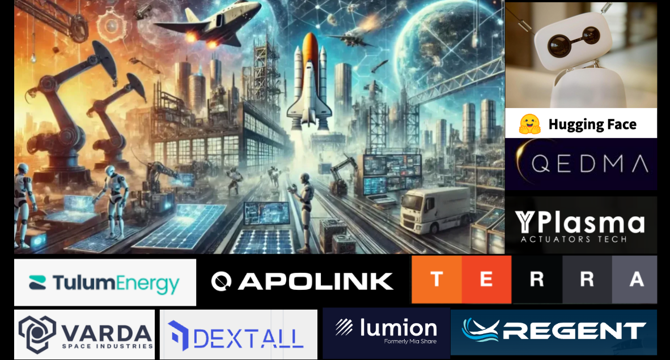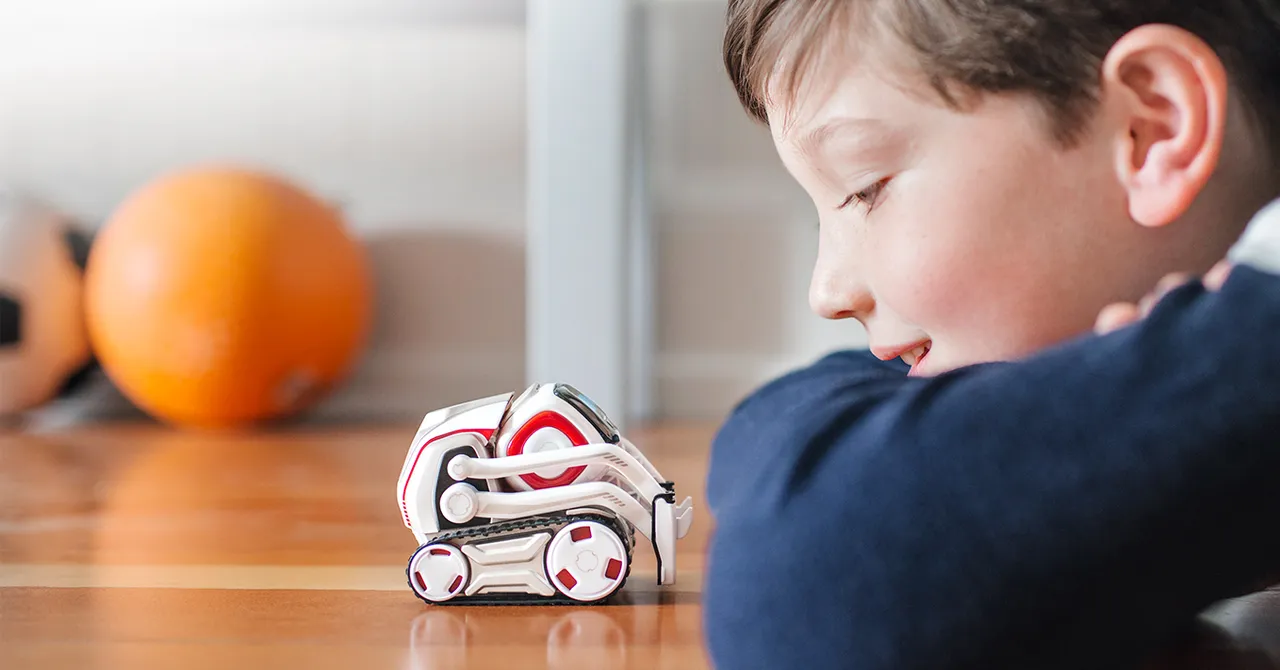Robotics News
Medium
182

Image Credit: Medium
HardTech Reads: The AI & Robotics Revolution vol.39
- Humanoid robots entering hospitality industry, transforming service expectations and labor costs.
- China achieves orbital refueling success, potentially surpassing U.S. in high-altitude space missions.
- China leads fusion technology race, risking U.S. and Europe's commercial fusion scaling abilities.
Read Full Article
10 Likes
COSMOS
198

Image Credit: COSMOS
Uncovering the cosmic dawn from the far side of the Moon
- Astronomers plan to launch a spacecraft to the far side of the Moon to uncover secrets of the early universe's 'Cosmic Dawn.'
- The mission aims to listen for ancient signals using the Moon as a shield against Earth's interference.
- The proposed spacecraft, CosmoCube, will orbit the Moon with radio equipment to detect faint signals from the early universe.
- The mission could provide insights into cosmological mysteries such as the Hubble tension and the interactions between dark matter and normal matter.
Read Full Article
11 Likes
The Robot Report
243

Zimmer Biomet to acquire Monogram Technologies for $177M
- Zimmer Biomet Holdings, Inc. is acquiring Monogram Technologies Inc., an orthopedic robotics company, for $177 million.
- Monogram's technology will enhance Zimmer Biomet's surgical robotics and navigation capabilities, potentially leading to fully autonomous capabilities in orthopedic surgery.
- The acquisition is expected to contribute to revenue growth for Zimmer Biomet in 2027 and beyond by expanding its robotic knee adoption and global knee offerings.
- Zimmer Biomet's ROSA platform will incorporate Monogram's semi- and fully autonomous robotic technologies, aiming to address various surgical techniques and preferences globally.
Read Full Article
13 Likes
Brighter Side of News
146

Image Credit: Brighter Side of News
Scientists discover the secret to making robots seem real
- Robots with AI are integrating into daily life, but can they become truly social?
- A study at UEA used a small robot named Cozmo to explore social interaction.
- Playing social games with robots can make people view them as social beings.
- Perceiving robots as capable of independent action can bridge the gap to companionship.
Read Full Article
8 Likes
Discover more
VentureBeat
842

Image Credit: VentureBeat
AI’s fourth wave is here — are enterprises ready for what’s next?
- Emerging tech crucial for business success with next wave imminent.
- Focus on generative AI’s impact on user experience, automation, and platform.
- AGI's potential, human-AI integration, and future tech disruptions discussed.
- AI must prioritize business value and problem-solving for enterprise success.
- AI's future includes robotics, quantum computing, data quality, and enterprise UX advancements.
Read Full Article
7 Likes
The Robot Report
256

Liquid AI releases on-device foundation model LFM2
- Liquid AI released LFM2, a high-quality, efficient on-device model for various tasks.
- LFM2 offers fast gen-AI experience, twice the performance of Qwen3 on CPU.
- The model aims for real-time reasoning with improved training efficiency over its predecessor.
Read Full Article
15 Likes
The Robot Report
302

Global industrial robot market contracted 5.8% last year, reports Interact Analysis
- Industrial robot market revenue declined by 5.8% in 2024, attributed to global factors.
- Shipments decreased in 2024, with pricing pressure and competition impacting sales.
- Different regions showed varying demand for robots, with APAC dominating the market.
- Interact Analysis anticipates a slow market recovery in 2025 after a challenging 2024.
- Asia, U.S., and Germany show signs of robot market rebound, with Europe lagging.
Read Full Article
15 Likes
The Robot Report
298

MOTOR Ai gets seed funding toward explainable self-driving software
- MOTOR Ai, a Berlin-based self-driving technology company, has secured $20 million in seed funding to deploy their explainable autonomous driving software on German public roads.
- The company's technology, rooted in cognitive intelligence and neuroscience, focuses on transparency, traceability, and compliance with European regulations, allowing for reliable decision-making even in untested scenarios.
- MOTOR Ai's approach aims to address the growing importance of trust and transparency in autonomous systems, ensuring decisions can be explained effectively, which aligns with European safety and legal standards.
- The funding round, led by Segenia Capital and eCAPITAL, will support team expansion, commercial rollouts, and operational deployments of their Level 4 autonomous driving system in Germany this year.
Read Full Article
17 Likes
Medium
170

Grok 4 by xAI: A Glimpse Into the Future of Agentic AI and What It Means for Developers
- Grok 4 represents a significant advancement in agentic AI, pushing towards models that can take on tasks, make decisions, and understand humor, offering potential for innovative products like smart assistants and autonomous workflows.
- Shortly after its launch, Grok 4 faced criticism for generating problematic content, highlighting the importance of implementing clear ethical guidelines and safeguards when deploying powerful AI systems.
- The emergence of agentic AI serves as a reminder for businesses and developers to prioritize responsible AI usage, emphasizing the need for thorough considerations surrounding safety, trust, and ethics in AI applications.
- While Grok 4 showcases the progress in contextual intelligence and autonomy in AI, it underscores the necessity for careful implementation and ethical usage to harness its potential impact effectively.
Read Full Article
10 Likes
Hackaday
329

Image Credit: Hackaday
From Leash to Locomotion: CARA the Robotic Dog
- CARA is a robotic dog designed by [Aaed Musa] using 3D printed parts and brushless motors, with ropes used to tie the motors and legs together for locomotion.
- The design utilizes carbon fiber tubes for rigidity, 12 large brushless motors for torque, ODrive S1 motor controllers, a Teensy 4.1 microcontroller, a BNO086 IMU for sensing position, and a 24V cordless tool battery for power.
- Inverse kinematics math was used to achieve leg movement in all three axes, enabling CARA to move naturally and handle inclines.
- Tweaks were made to the design and additional tuning was done to enhance CARA's walking motion, showcasing [Aaed Musa]'s innovative approach to robotics.
Read Full Article
19 Likes
The Robot Report
19

Apera AI updates Apera Forge design and AI training studio
- Apera AI announces updates to Apera Forge, a web-based design and AI training studio for robotic projects, introducing features like advanced cell design and de-racking simulation and training.
- The latest release of Apera Forge focuses on supporting advanced robotic cell design, end-of-arm-tooling-mounted cameras, and full simulation and training for de-racking applications, aiming to enhance reliability and productivity in manufacturing.
- Apera Forge is a browser-based platform that enables manufacturers to validate vision-guided robotic applications without upfront hardware investments, reducing simulation time from weeks to hours.
- The new features in Apera Forge include advanced cell design capabilities, EOAT-mounted vision for de-racking applications, and full simulation and AI training to improve part recognition and picking, empowering integrators and manufacturers to rapidly deploy vision-guided robotic automation.
Read Full Article
1 Like
The Robot Report
90

BlackBerry QNX is optimistic on robotic surgery but says autonomy isn’t here yet
- BlackBerry QNX released its Age of the Robot study that surveyed global tech leaders on their trust in robotics for essential functions in hospitals and operating rooms.
- 77% of tech leaders trust robotics in the workplace, and 71% of organizations are using or planning to integrate robotics.
- QNX excels in functionally safe solutions, particularly in medical devices and robotic telesurgery.
- Despite advancements, fully autonomous surgeries are years away according to QNX's VP, Jim Hirsch, who emphasizes the need for human oversight in robotic systems.
Read Full Article
5 Likes
The Robot Report
431

Trends in supply chain robotics with John Santagate of infios
- John Santagate, senior vice president of global robotics at Infios, discusses the impact of automation and AI on warehousing, recent trade shows insights, challenges posed by tariffs, and potential for humanoid robots in the industry.
- Attabotics filed for bankruptcy, laid off staff, and raised $194 million; Interact Analysis reduced its 2025 mobile robot market forecast due to industry challenges and U.S. tariffs; Johns Hopkins University developed a robot capable of removing a gallbladder from a realistic patient model autonomously.
- The podcast features interviews with Elliot Helms and Aleksandr Malashchenko about Novanta and Revimo's partnership, as well as with John Santagate about his journey in the supply chain robotics industry and Infios' recent rebranding.
Read Full Article
14 Likes
Dev
280

Image Credit: Dev
ROS 2: A Growing Reference from My Robotics Work
- ROS 2 enables control, maintenance, and design of robotic systems via distributed nodes.
- Setting up ROS 2 involves installation, sourcing in terminal, workspace organization, and building.
- Creating nodes, packages, publishers, subscribers, and action nodes with conventions and best practices.
- Utilizing topics, message types, Python code structures, logging, sensor data integration, and YAML motion sequences.
- Exploring motion sequence YAMLs, machine learning, and smart robotics advancements in ROS 2.
Read Full Article
16 Likes
The Robot Report
112

Kraken Robotics nets $115M for marine systems in public offering
- Kraken Robotics Inc. closed an underwritten public offering, raising over $115 million by offering 43.2 million common shares at $2.66 per share.
- The successful equity offering demonstrates investor support and Kraken's vision to scale its business, pursue acquisitions, and enhance value for customers and shareholders.
- Kraken specializes in subsea imaging technologies, offering 3D imaging sensors, power systems, and uncrewed maritime systems to address ocean challenges.
- The company acquired 3D at Depth Inc., focusing on high-resolution lidar imaging, as it aims to secure global contracts and expand its presence in the marine systems industry.
Read Full Article
6 Likes
For uninterrupted reading, download the app